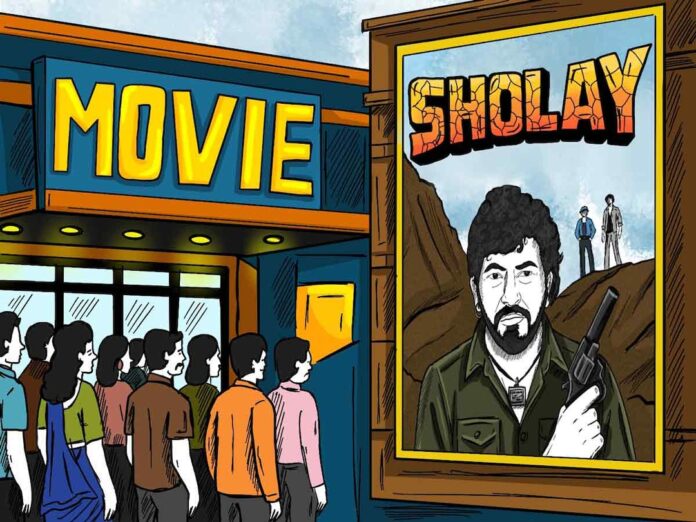Gabbar Singh: The making of a Bollywood legend
To celebrate the golden jubilee of the iconic film Sholay, which premiered on August 15, 1975, we look back at the creation of its most memorable character, Gabbar Singh.
In 1973, in a “smoky room in Bombay,” writers Salim Khan and Javed Akhtar were meticulously crafting the script for Sholay. As they worked, they faced a major challenge: finding the perfect actor for the role of Gabbar.
Director Ramesh Sippy’s initial choice, Danny Denzongpa, had a scheduling conflict and couldn’t take the part. Other established actors like Amitabh Bachchan and Sanjeev Kumar were considered but turned down. For a time, Sippy even thought of casting veteran actor Prem Nath, but abandoned the idea due to his “reputation for being eccentric and difficult.”
The search for the elusive dacoit ended with Amjad Khan, a struggling actor and the son of prominent character actor Jayant. A friend of Jayant’s, Salim Khan, met Amjad and promised to introduce him to Sippy, telling the young actor, “If you get the role, it will change your life.”
READ ALSO: The Making of a Bollywood Icon: How Amitabh Bachchan landed the role of a lifetime in Sholay
When Amjad was brought to Sathe House to meet the team, Sippy immediately saw potential. As the article states, “Sippy’s fingers tightened around the rim of a glass of cutting-chai. His breath grew heavy with expectation.
‘This is my Gabbar,’ he whispered to himself, fervently hoping.” While some of the crew were hesitant, finding his voice “too light for a dacoit,” Sippy was convinced by Amjad’s raw energy and the “mix of mischief and danger” in his eyes.
Amjad’s audition, delivering the iconic line “Yeh haath humko de de, Thakur,” solidified Sippy’s belief that he had found “Gabbar Singh incarnate.” Despite a rocky start on the set where he “fumbled with lines, stumbled in front of the camera,”
Amjad, encouraged by Sippy, settled into the role. He brought a unique, unpredictable energy to the character, from his “sinister grin” to his chilling delivery of lines like “Soja, nahi toh Gabbar Singh aa jayega.”
When the film was released, Gabbar Singh became a cultural phenomenon, with his dialogues becoming “cultural anthems” across India. As Anupama Chopra notes in Sholay: The Making of a Classic, Gabbar became “the fulcrum of the film,” a villain who was as captivating as he was terrifying.
The article concludes that Amjad Khan’s Gabbar Singh remains “Bollywood’s greatest villain” and a legend that lives on, as his character would say, for “Poore pachaas hazaar” (a full fifty thousand).
Follow the Neptune Prime channel on WhatsApp:
Do you have breaking news, interview request, opinion, suggestion, or want your event covered? Email us at neptuneprime2233@gmail.com





